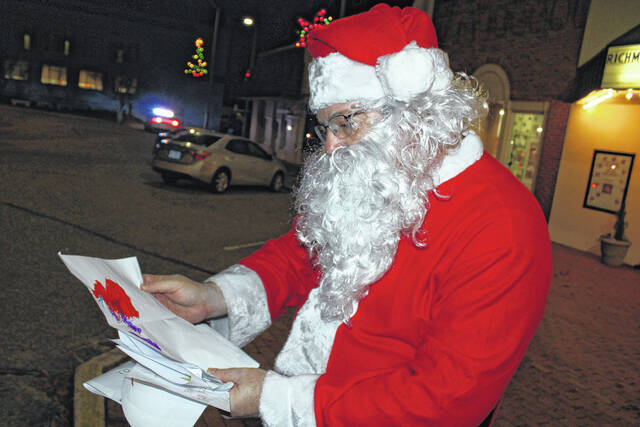Since its 1966 inception, Kwanzaa has become a beloved week-long holiday celebrated by the African American community. Established by professor and chairman of Black studies at California State University, Dr. Maulana Karenga, Kwanzaa was first celebrated December 26, 1966, and ended on January 1, 1967.
The holiday is based on African harvest festival traditions from parts of the West, East, and Southeast locations of Africa.
Families celebrate in various ways, but many incorporate songs, dances, African drums, storytelling, and poetry reading.
On each of the seven nights families gather together, and the children will light one of the candles on the kinara or candleholder. The family then discusses one of the seven principles called Nguzo Saba. Each day of Kwanzaa reflects a different principle for families to celebrate and meditate on.
The seven principles of Kwanzaa are geared towards the values of African culture, such as those contributing to building, growing, strengthening, and unifying African American communities in America. The principles are as follows;
Umoja (oo–MO–jah) or Unity
This principle strives for and seeks to maintain unity in the family, community, nation, and African American race.
Kujichagulia (koo–gee–cha–goo–LEE–yah) or Self Determination
This principle encourages African Americans to define themselves, name, create, and speak for themselves.
Ujima (oo–GEE–mah) or Collective Work and Responsibility
This principle focuses on building and maintaining community while making each other’s individual problems the communities and encourages African Americans to work towards solving their problems together.
Ujamaa (oo–JAH–mah) or Cooperative Economics
This principle encourages African Americans to work towards being entrepreneurs. The idea being to profit together.
Nia (nee–YAH) or Purpose
This principle encourages African Americans to focus on the goal of building and developing their own community while restoring African Americans to traditions of greatness.
Kuumba (koo–OOM–bah) or Creativity
This principle inspires African Americans to always do as much as they can, any way they can, to leave their community more beautiful than when they inherited it.
Imani (ee–MAH–nee) or Faith
This principle is to motivate African Americans to believe in their people, their parents, their teachers, their leaders, and the righteousness and victory of the African American struggle.
In addition to Karenga’s seven principles, he also established seven symbols to represent Kwanzaa.
The first symbol is Mazao or the crops, such as fruits, nuts, and vegetables. Mazao symbolizes work and is the basis of Kwanzaa. It represents the gathering of people and is fashioned after African harvest festivals where joy, sharing, unity, and thanksgiving are celebrated.
The second symbol is Mkeka or Place Mat. The mkeka symbolizes history, culture, and tradition. Often it is made from Kente cloth, African mud cloth, or other textiles from various areas of Africa.
The third symbol of Kwanzaa is Vibunzi or ear of corn, and its meaning is truly beautiful. The corn stalk represents fertility by symbolizing children, as well as the future hopes of the family. One ear of corn is called vibunzi, and two or more ears of corn are called mihindi. Each ear represents a child in the family, and is placed on the mkeka for each child in the family. If the family has no children, two ears of corn are set on the mkeka to symbolize each person is responsible for the children in their community.
The fourth symbol is the one most widely associated with Kawanzaa; Mishumaa Saba or The Seven Candles.
Two primary purposes of the ceremonial candles lit during the holiday is to symbolically re-create the sun’s power and to provide light.
Mishumaa saba are represented by seven total candles; three red, three green and one black.
The first night of Kwanzaa, December 26, is when the black candle is lit. This candle symbolizes Umoja or unity, and also represents success. The three green candles are placed on the right side of the Umoja candle, while the three red candles are placed to the left of the Umoja candle.
The candles represent African gods. The red candle represents Shango, the Yoruba god of fire, thunder, and lightning. Shango lives in the sky and sends down an occasional thunderbolt when he becomes angry or offended. The black candle represents people, earth, and the source of life. It also stands for hope, creativity, and faith. The green candles symbolizes the earth that maintains humanity. It is believed to provide hope, divination, employment, and fruits of the harvest.
The kinara or candle holder represents the original roots of the African Americans community, symbolizing their ancestry. The kinara can come in various shapes, just as long as the seven candles remain separated from each other, and can be made from branches, wood, or other natural materials.
The sixth symbol is Kikombe Cha Umoja or the Unity Cup.
The kikombe cha umoja is a special cup used to perform the libation or tambiko ritual during the Karamu feast on the sixth day of the holiday. Many African societies pour libations for the living dead whose souls are believed to remain with the earth they worked.
On the seventh day of Kawanzaa, Zawadi or gifts are exchanged.
Zawadi are given to encourage growth, achievement, and success, and are exchanged between immediate family members. Gifts are given to encourage or praise accomplishments or commitments that have been kept. Handmade gifts are valued and encouraged.




